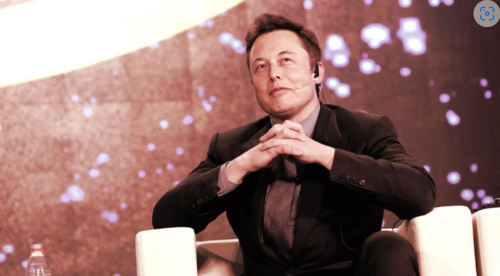
By Kate Irwin

Tesla CEO Elon Musk. Image: Shutterstock
Twitter will now begin sharing an undisclosed amount of its ad revenue with content creators when ads appear in their replies, Twitter CEO Elon Musk said Friday.
Musk added that only accounts currently subscribed to Twitter Blue will be eligible to earn revenue from their reply section ads, meaning it will cost users roughly $8 a month to monetize content in this way. While there’s currently no official statement from Twitter regarding the use of crypto in its payment or monetization plans, the Financial Times reported earlier this week that Musk intends to keep that option on the table.
Musk did not share further details on the ad revenue split between Twitter and its creators, but he did make a point to criticize, yet again, the “legacy verification” system at Twitter.
Prior to Musk’s takeover, celebrities, journalists, government officials, businesses, and other public figures were eligible for Twitter’s coveted blue check mark if they applied with supporting documentation proving their eligibility. But Musk has continuously decried this process.
“Twitter’s legacy Blue Verified is unfortunately deeply corrupted, so will sunset in a few months,” he said.
Musk’s latest ad revenue announcement immediately drew numerous questions and concerns from users—many of whom asked for more details so they could weigh the cost-benefit analysis of paying $8 a month to make an undisclosed, likely smaller amount of money in return.
To the average creator, the cost of buying ads on Twitter is extremely opaque, as Twitter says advertising costs per post are priced “in an auction model.”
“The targeting, creatives, and bid you select in your campaign setup will help determine how much each billable action costs,” Twitter’s Ads Help Center reads.
But whether such ads would even be profitable for smaller creators isn’t the only possible issue with Musk’s plan. Twitter user Alex Buck, who works in media, argued that reply ads are actually riskier for brands than placing ads between tweets.
“Most brands and agencies opt to avoid replies and search result placements simply due to brand safety concerns,” Buck said.
Others, like USC philosophy PhD student Christa Peterson, argue that the ads in tweet replies are “maddening.” Clearly, Peterson’s not alone, as the tweet has already garnered over 75,000 likes.
Since Musk joined Twitter in late October, the social media site has lost 50% of its top advertisers, which had previously spent $2 billion in ads in the past two years. And last month, The Information reported that Twitter’s advertising business is not yet showing signs of improvement, with the largest ad-buying company reducing its Twitter ad spending by 40-50%.
Twitter’s ad revenue has been historically essential to its business, with an Axios graphic showing that ads make up approximately 90% of Twitter’s revenue.
Besides Musk’s ongoing efforts to revitalize Twitter’s ads business and share an unknown fraction of that with creators, the company appears to be pushing forward with its payments products. On Monday, Financial Times reported that Musk has asked engineers to build out its payments systems in fiat, but wants a crypto option to be technically possible down the line.
While there’s currently no evidence that Twitter will be adding crypto payments to its Twitter “Coins” plans, the price of Dogecoin, Musk’s preferred cryptocurrency, pumped earlier this week following the news.
